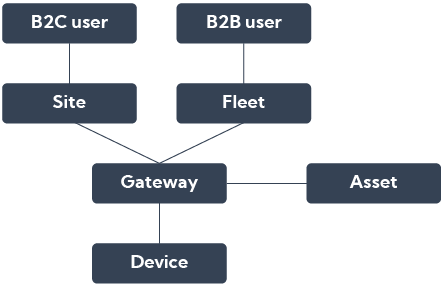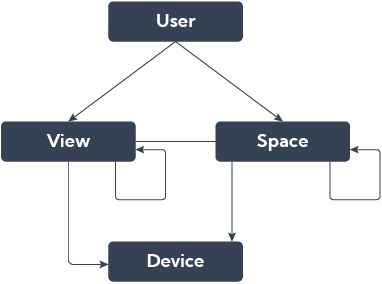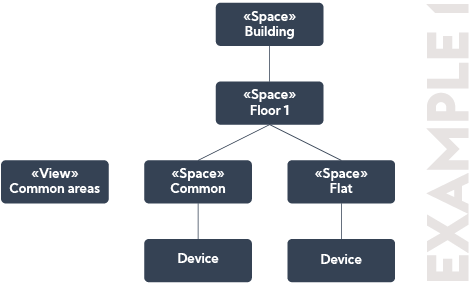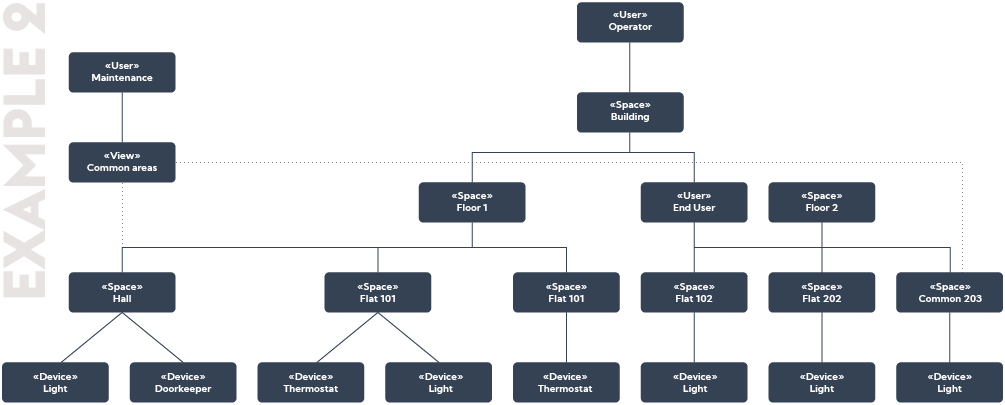Smart IoT Platform
|
Smart IoT Solutions comes with a developer portal, it gives you access to the complete documentation of all our APIs and to the list of data/actions per device to widen the possibilities. Finally, once your project is defined, we give you access to the instantiated platform with pre-prod and prod environments to develop your services. Before you start, find below the main concepts of Data Model, Authentication, Authorisation, REST API & Asynchronous Messages on which our services are based. |


|
|
Object oriented Data Model which covers the interactions between users and objects 
|
B2C user:
B2B user:
Site:
Fleet:
Gateway:
Device:
Asset:
|

|
|
Business-oriented Data Model which hosts the different business ontologies around buildings (connected home, collective housing...). 
|
User:
Space:
View:
Device:
|
|
Here are 2 examples of topology that could be defined for a twin Once the topology framework is defined, you can instantiate it to represent your actual buildings. Thus, you can develop your applications by manipulating the twin, and optimise the use of data for new services. |

|



|
|
Because privacy and security are essential, you should follow the OAuth 2.0 protocol which is the industry-standard protocol for authorisation and the most secure authorisation protocol. Finally, never store users’ credentials. This is strictly unauthorised. You can only store the access token/refresh token |
Scope: Your app isn’t automatically granted a scope, users give you scope permission while authorising your app. During the OAuth process, you will be able to request the scope you need for your users, your token will be limited to those scopes. So only use the scope you need. |

|
All the platform's services are accessible via . The use of the REST technology makes it possible to standardise the exchanges relating to the data and business objects handled by our platform. This facilitates the adoption and integration of our services into your applications. The REST APIs are based on the HTTPS protocol and only allow synchronous exchanges between your applications and our services. Some use cases require the use of asynchronous exchange such as a return requiring long processing on the backend side, event feedback.... |
In this case, you can use:
|
How to connect
